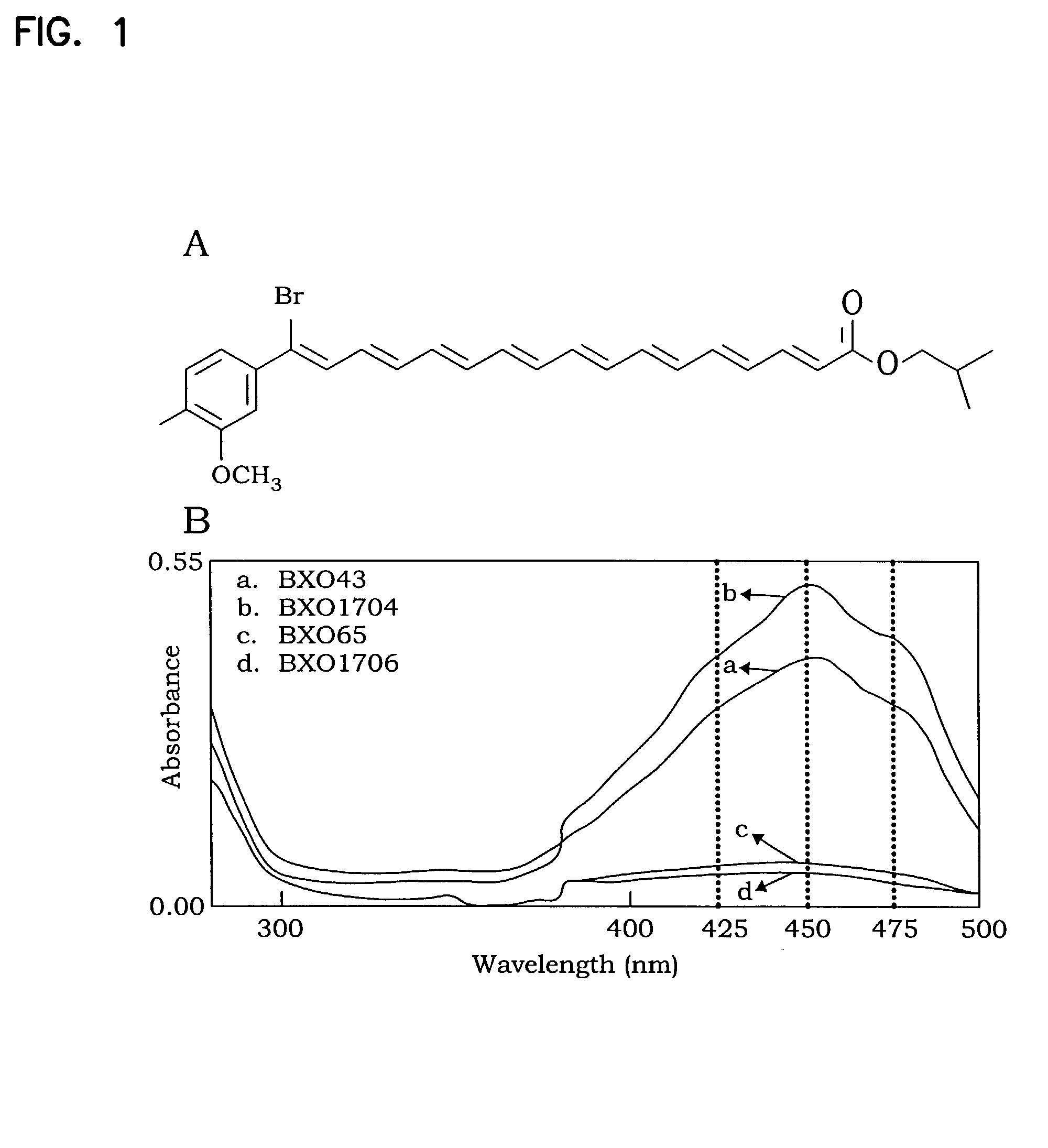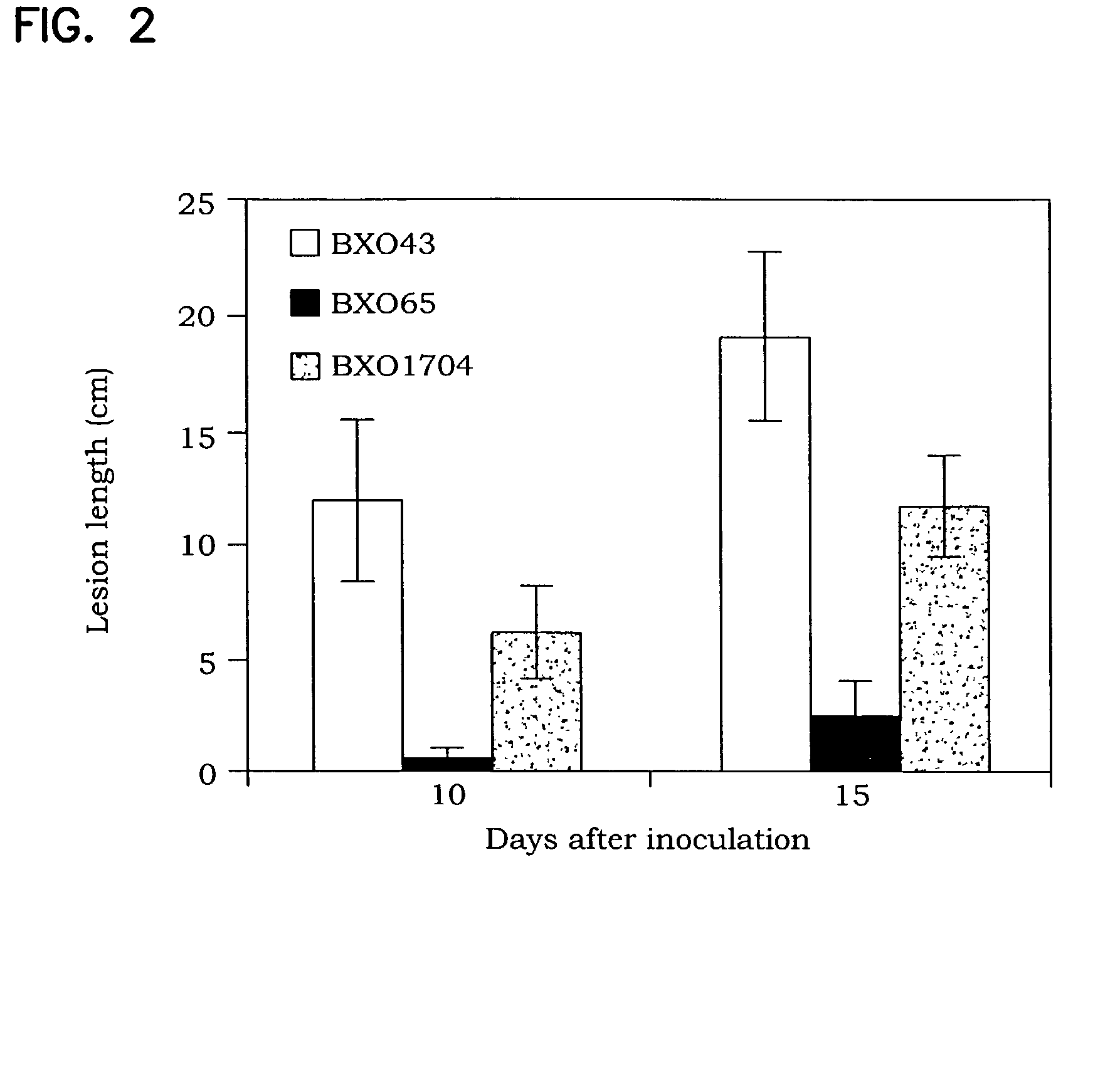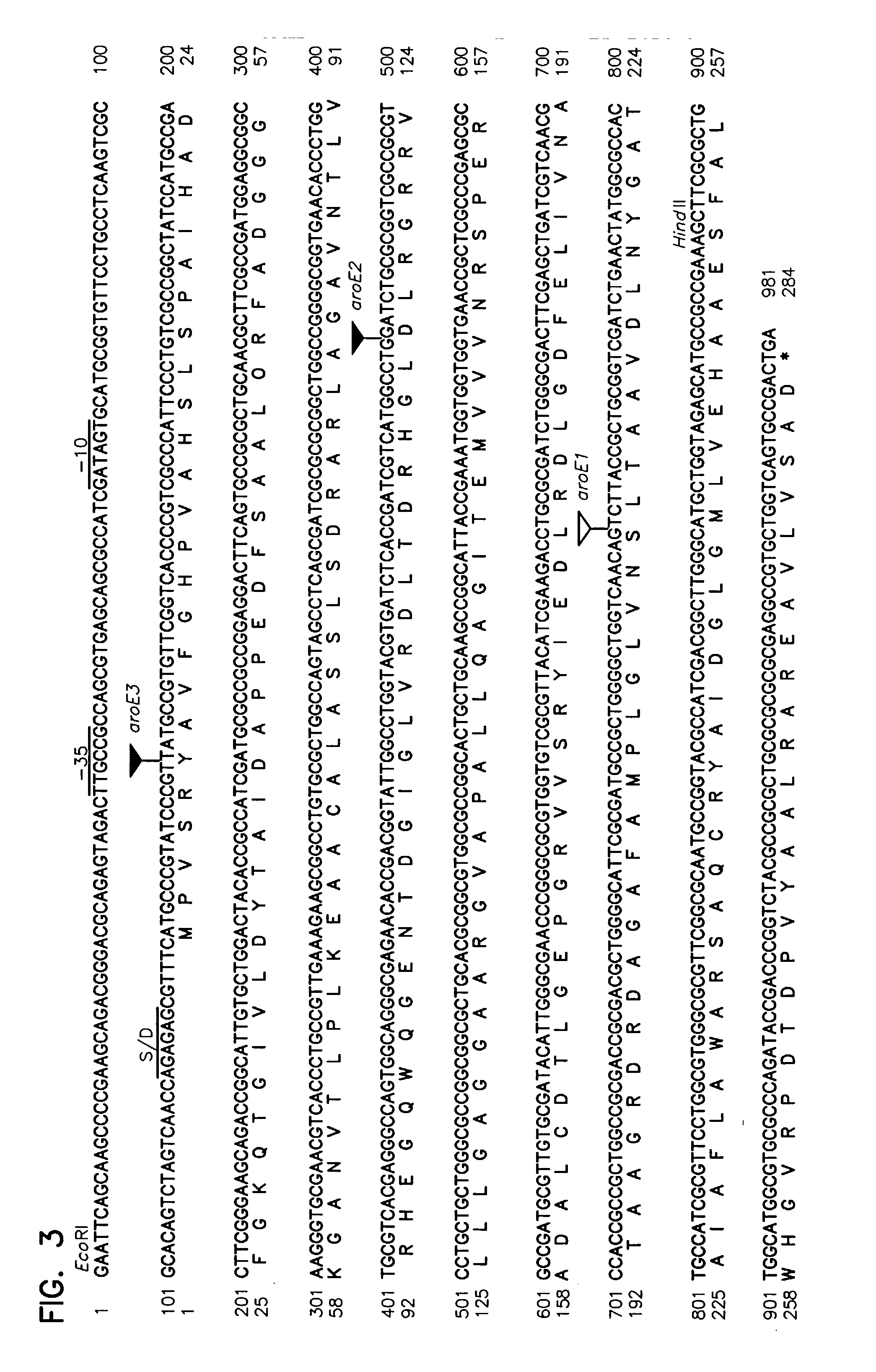Bacterial mutant BX065 and a method thereof
a technology of bacterial mutants and mutants, applied in the field of bacteria mutants, can solve the problems of affecting the host plant, not being effective under field conditions, and billions of dollars in damage across the glob
- Summary
- Abstract
- Description
- Claims
- Application Information
AI Technical Summary
Problems solved by technology
Method used
Image
Examples
example 1
[0135] Overexpression and Purification of Shikimate Dehydrogenase Enzyme of Xanthomonas oryzae pathovar oryzae.
[0136] The plasmids pAG7 containing aroE and the pGEX2T (Pharmacia Biotech, Upsaala, Sweden) are purified from cultures of Escherichia coli by the alkaline lysis method (25). PCR (Polymerase Chain Reaction) primers for the aroE gene are designed, by methods familiar to those well versed in the art, to incorporate the sites for BamHl and EcoRL. PCR is performed with Vent Polymerase (NEB) using pAG7 DNA as template to obtain a single fragment of approximately 870 bp. This fragment is digested with restriction enzymes BamH1 and EcoRI obtained from NEB. This fragment is cloned into the BamHI and EcoRI sites of pGEX2T using standard procedures as described (25) to generate a fusion of the shikimate dehydrogenase (aroE) alongwith the gene for glutathione-S-transferase that is encoded on pGEX2. Exponentially growing E. coli cultures containing this recombinant aroE plasmid are ind...
example 2
[0137] Development of a Screening Procedure for Identifying Inhibitors of Shikimate Dehydrogenase Enzyme of Xanthomonas oryzae Pathovar oryzae.
[0138] The purified shikimate dehydrogenase enzyme can be used in enzyme assays (32) to identify chemicals that are inhibitory to the activity of the enzyme. The assay involves use of Shikimic acid and NADP as substrates. The reduction of NADP to NADPH is followed by monitoring increase in absorbance at 340 nm. The inhibitors would be chemicals that would prevent / reduce enzyme mediated conversion of NADP to NADPH as monitored by following absorbance at 340 nm. The total reaction volume would be 100.mu. liters, sufficient to be accommodated in the 250.mu. liter wells of ELISA plates. The absorbance can be followed on an ELISA spectrophotometer. The reaction is rapid and proceeds to saturation in thirty seconds to one mimjte. This facilitates the screening of a large number of candidate inhibitor molecules. The procedure can be automated, where...
example 3
[0139] Development of a Screening Procedure for Identifying Inhibitors of Shikimate Dehydrogenase Enzyme of Xanthomonas oryzae Pathovar oryzae Using the Cloned X. oryzae Pathovar oryzae aroE Gene (PAGS).
[0140] The principle of this method is that a strain carrying shikimate dehydrogenase gene on a high copy number plasmid (pAG5; pBluescript is the vector) will produce higher amounts of shikimate dehydrogenase and can therefore tolerate higher concentrations of shikimate dehydrogenase irihibitor. The host strain would be an E. coli wild type strain containing either pAG5 (table 1) or the pBluescript vector without added insert. The use of E. coli is doubly advantageous because it grows faster than X. oryzae pv. oryzae and the high copy number plasmid (copy number of 500-1000 / cell) can replicate in E. coli and not in X. oryzae pv. oryzae. Results presented demonstrate that the X. oryzae pv. oryzae gene is expressed and will functionally complement an E. coli aroE mutant. The criteria ...
PUM
| Property | Measurement | Unit |
|---|---|---|
| doubling time | aaaaa | aaaaa |
| concentration | aaaaa | aaaaa |
| concentrations | aaaaa | aaaaa |
Abstract
Description
Claims
Application Information
 Login to View More
Login to View More - R&D
- Intellectual Property
- Life Sciences
- Materials
- Tech Scout
- Unparalleled Data Quality
- Higher Quality Content
- 60% Fewer Hallucinations
Browse by: Latest US Patents, China's latest patents, Technical Efficacy Thesaurus, Application Domain, Technology Topic, Popular Technical Reports.
© 2025 PatSnap. All rights reserved.Legal|Privacy policy|Modern Slavery Act Transparency Statement|Sitemap|About US| Contact US: help@patsnap.com



